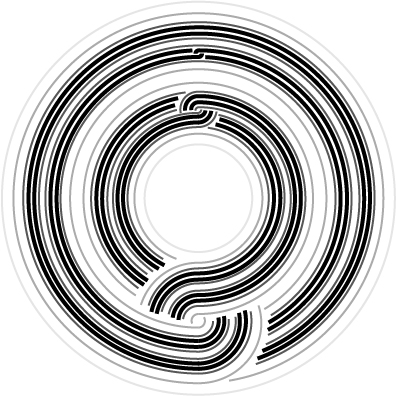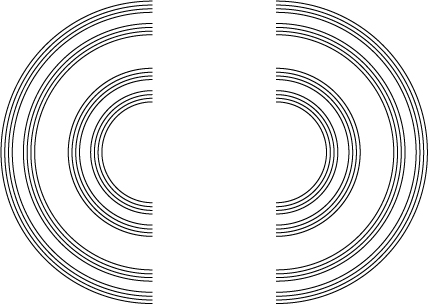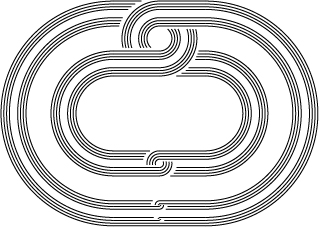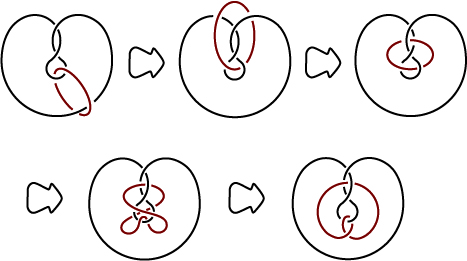Valentine’s day special issue~ ^_^
Professor Gabai decided to ‘do some classical topology before getting into the fancy stuff’ in his course on Heegaard structures on 3-manifolds. So we covered the ‘loop theorem’ by Papakyriakopoulos last week. I find it pretty cool~ (So I started applying it to everything regardless of whether a much simpler argument exists >.<)
Let be a three dimensional manifold with (non-empty) boundary. In what follows everything is assumed to be in the smooth category.
Theorem: (Papakyriakopoulos, ’58)
If extends continuously to
and the image
is homotopically non-trivial in
. Then in any neighborhood
we can find embedded disc
such that
is still homotopically non-trivial in
.
i.e. this means that if we have a loop on that is non-trivial in
but trivial in
, then in any neighborhood of it we can find a simple loop that’s still non-trivial in
and bounds an embedded disc in
.
We apply this to the following:
Corollary: If a knot has
then
is the unknot.
Proof: Take tubular neighborhood , consider
, boundary of
is a torus.
By assumption we have .
Let be a loop homotopic to
in
.
Since and any loop in
is homotopic to a loop in
. Hence the inclusion map
is surjective.
Let be the little loop winding around
.
It’s easy to see that generates
. Hence there exists
s.t.
in
. In other words, after
Dehn twists around
,
is homotopically trivial in
i.e. bounds a disk in
. Denote the resulting curve
.
Since is simple, there is small neighborhood of
s.t. any homotopically non-trivial simple curve in the neighborhood is homotopic to
. The loop theorem now implies
bounds an embedded disc in
.
By taking a union with the embedded collar from to
in
:
We conclude that bounds an embedded disc in
hence
is the unknot.
Establishes the claim.
Happy Valentine’s Day, Everyone! ^_^


















